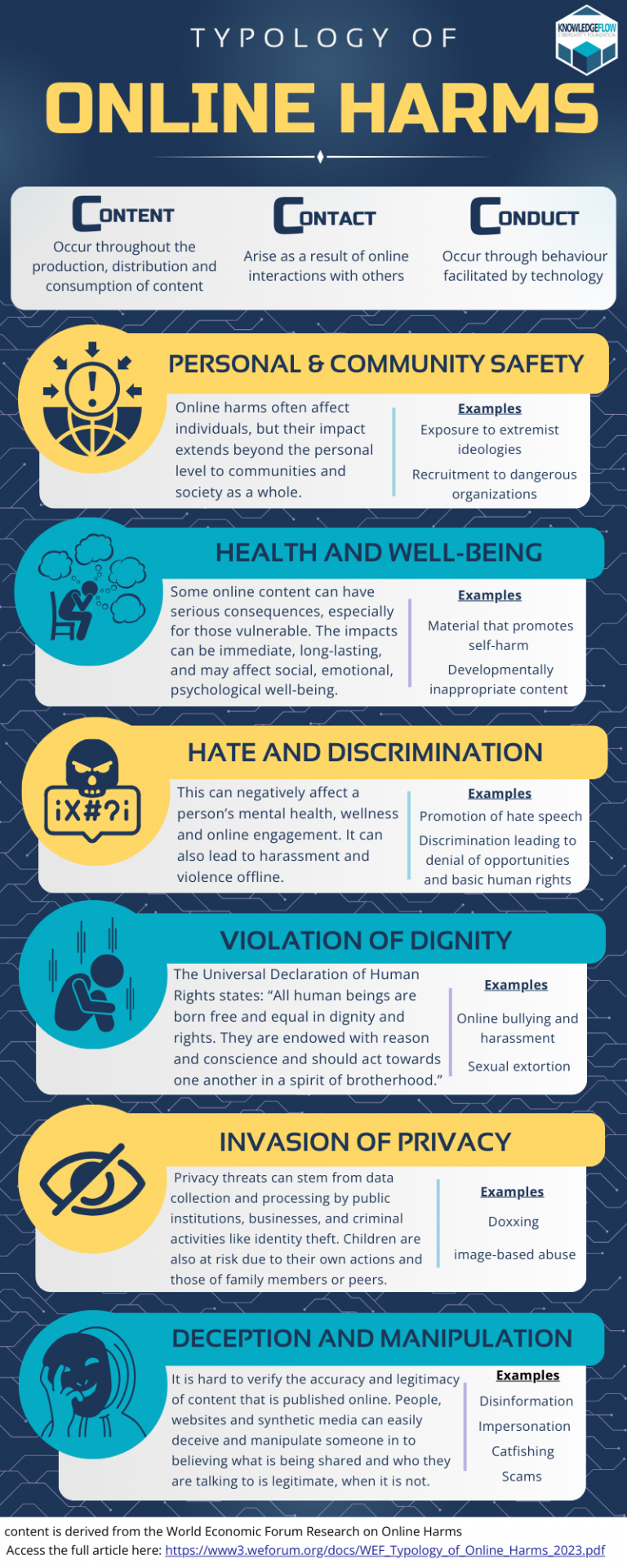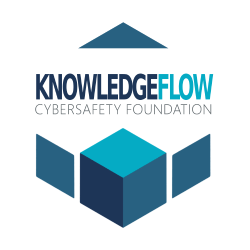Typology of Online Harms
Understand the diverse landscape of online harms with our comprehensive guide on the Typology of Online Harms. Delve into the categories of content, contact, and conduct to recognize threats to personal and community safety, health, and wellbeing. Equip yourself with the knowledge to navigate the digital world safely and protect against various online risks. Stay informed and safeguard your online experience today.
Learn more ways to keep safe online!
Check out our available courses down below.

Content
Occur throughout the production, distribution and consumption of content
Contact
Arise as a result of online interactions with others.
Conduct
Occur through behaviour facilitated by technology.
tEXT VERSION
Write a clear and relevant header to keep your visitors engaged
PERSONAL & COMMUNITY SAFETY
Online harms often affect individuals, but their impact extends beyond the personal level to communities and society as a whole.
Examples: Exposure to Extremist Ideologies, Recruitment to Dangerous Organizations
HEALTH AND WELL-BEING
Some online content can have serious consequences, especially for those vulnerable. The impacts can be immediate, long-lasting, and may affect social, emotional, psychological well-being.
Examples: Material that Promotes Self-Harm, Developmentally Inappropriate Content
HATE AND DISCRIMINATION
This can negatively affect a person’s mental health, wellness and online engagement, it can also lead to harassment and violence offline.
Example: Promotion of Hate Speech, Discrimination leading to denial of opportunities and basic human rights
VIOLATION OF DIGNITY
The Universal Declaration of Human Rights states: “All human beings are born free and qual in dignity and rights. They are endowed with reason and conscience and should act towards one another in a spirit of brotherhood.”
Example: Online bullying and harassment, Sexual Extortion
INVASION OF PRIVACY
Privacy threats can stem from data collection and processing by public institutions, businesses, and criminal activities like identity theft. Children are also at risk due to their own actions and those of family members or peers.
Examples: Doxxing, Image-Based Abuse
DECEPTION AND MANIPULATION
It is hard to verify the accuracy and legitimacy of content that is published online. People, websites and synthetic media can easily deceive and manipulate someone into believing what is being shared and who they are talking to is legitimate, when it is not.
Examples: Disinformation, Impersonation, Catfishing, Scams

Resources
View our other tipsheets
Explore our resources on cybersafety, privacy protection, and educational content tailored for everyone. Our collection of tipsheets covers essential topics in cybersecurity, ensuring users of all backgrounds can navigate the digital world securely. Whether you’re safeguarding personal information, learning about privacy best practices, or seeking educational resources, our page equips you with practical insights to stay safe online. Dive into our resources and enhance your digital resilience today.

